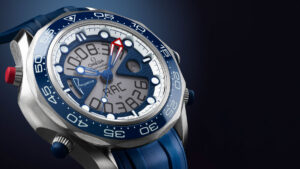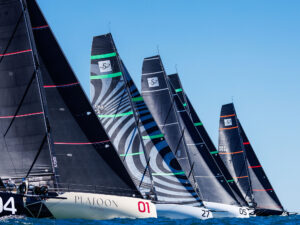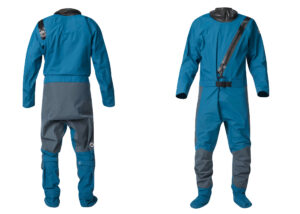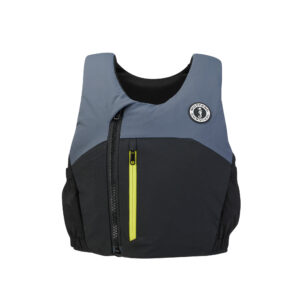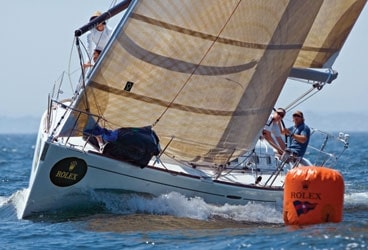
PimpSt
Tim McAdams first told me of his desire to win the centennial Bermuda Race late in the fall of 2005. To put it mildly, I didn’t like his chances. Aside from the inherent difficulties of winning the most anticipated East Coast distance race of the new millennium-and McAdams insisted on competing in the pro-laden Gibbs Hill division-he planned on doing the race on a Beneteau 44.7 called Four Stars, which was configured primarily for cruising.However, McAdams had a few things going for him. He was willing to make whatever changes were needed to make the boat competitive. And, once the boat was pulled out of the water we could start to see it had a lot of potential, which was confirmed by some online research. The First 44.7 is a Farr design, optimized for IRC, and to that point had amassed an impressive track record under that rule, including excellent results in the Sydney to Hobart. Preliminary DecisionsOne of the first people McAdams spoke with about his dream of winning the Bermuda Race was Rob McMillan, the owner of the Quantum Sails loft in Newport, R.I. McMillan explained that the boat would need an entirely different suit of sails from the current cruising setup, and that this would require the boat’s deck layout and running rigging, among other things, to be drastically modified. To facilitate this process, McMillan put McAdams in touch with my company, Atlantic Yacht Services in Newport, R.I.Before any work could be done to optimize McAdams’ boat, a lot of decisions had to be made in regards to the racing sailplan. During the fall of 2005, McMillan and Quantum sail designer Dave Armitage researched existing IRC certificates for 44.7s and ran several test certificates through the IRC office in England to see what might work best for the Bermuda Race. “We decided to go with large asymmetric spinnakers and 145-percent genoas,” says McMillan. “Given the historic reaching conditions of the Bermuda Race and IRC’s indifference toward A-sails over symmetric sails, we figured asymmetric spinnakers would give us an edge. We took a gamble on with the headsail size, incurring a slight penalty for a larger than normal genoa. Lastly we decided to build a 145-percent, high-clewed jib top reacher, and a genoa staysail, to give the boat a powerful reaching sailplan.”From S to AModifying a boat rigged for symmetric spinnakers to accommodate asymmetric kites might seem like a simple process. But for Four Stars it was anything but. Among the steps involved with this change were: building an oversized spinnaker pole, changing the deck layout, creating reaching struts, and adding a bobstay.The bobstay is where the process had to start. Any boat hoping to fly asymmetric spinnakers from a conventional pole needs a bobstay, which is a line that runs off the bow of the boat, forward of the head stay attachment, and clips on to the tack of the spinnaker. When sailing downwind on either tack, it acts like a foreguy, keeping luff tension on the spinnaker. During jibes, the spinnaker flies off the bobstay while it inverts and the pole is switched.Because Four Stars’ headstay plugged into a fitting on the stem of the boat, there was no room to attach a block forward of this fitting. Working with CAM machine shop in Bristol, R.I., we built a new bow fitting with a fairlead under the headstay pin through which the bobstay line could run. The bobstay was then run aft, through a Spinlock clutch, to the portside pit winch. Four Stars’ original bow pulpit, like many conventional bow pulpits, extended well forward of the stem of the boat and had too much flare on the sides. A loaded bobstay would get hung up on it and possibly damage the pulpit. So we again turned to CAM machine shop, reducing the side flare of the pulpit and pulling the forward edge of the pulpit just inside the stem. We also installed a low profile LED Lopo Light, bow light. One Pole and Two StrutsTo fly the oversized spinnaker, we found Four Stars an oversized tapered carbon spinnaker pole that had been cast off by a TP52. We shortened the pole by cutting approximately three feet out of the middle. This section was sliced lengthwise and used a sleeve to splice the ends together. The pole was then laminated back together, faired, and painted with black non-skid. The resulting pole was about 3 feet longer than the boat’s J dimension, which measures along the deck from the mast step to the bow.To facilitate a dip-pole jibe, we installed a longer track on the mast. The new Harken track gave us the option to dip-pole jibe with masthead symmetrical kites-which MacMillan decided would be faster for breezy buoy races-or do an America’s Cup style jibe with asymmetrical kites, which involves detaching the pole from the mast and sliding it aft until the forward end can clear the headstay,.Compared to symmetric spinnakers, A-sails are generally flown with the pole further forward. This creates a tighter sheeting angle for the afterguys, which can create a large compression load on the pole. The oversized pole only exacerbated this problem. Reaching struts were needed to move the guy lead further outboard and change the sheeting angle. To make the struts as short as possible, we put the attachment points on the cabin trunk opposite a bulkhead. A quick pin secured the strut to the cabin trunk and a bridle system with a snap shackle kept the strut floating between the lifelines just in front of the shrouds.Re-running the Running RiggingFour Star’s factory-supplied lines were fine for the original cruising setup, but not for the new racing sail plan. So we upgraded virtually every halyard, sheet and control line. We used Yale Crystalyne, which has a vectran core, for the main and genoa halyards. Vectran has minimal stretch, enabling us to easily reproduce halyard tensions. The genoa halyards had the cover stripped to save weight and reduce windage aloft. We used New England Ropes Endura Braid for the spinnaker halyards; the covers were also stripped.We made the mainsheet (Maffioli DSK 75) and traveler (Maffioli Newswift) continuous. The continuous main sheet eliminated the concern for running out to the bitter end of the sheet on one winch. Clutches for the spinnaker sheets were added to facilitate peels.We upgraded the genoa car control lines to Maffioli DSK 75 and doubled the purchase to allow the headsail trimmer to move the cars when loaded. Adding an additional car on each track allowed us to change from blades to the overlapping genoas, and gave us an optional lead forward for staysail sheeting. We made a concerted effort create a deck layout that was as flexible as possible. The leads were placed to allow the use of multiple winches, which required small riser plates to be installed under several of the turning blocks. For example, we could take a spinnaker sheet to either primary, either pit winch, or the off side main drum.Several pad eyes were added along the rail to create more options for sheeting the jibtop, blast reacher and staysail. The staysail also needed a padeye along the centerline on the foredeck for the tack. This padeye was tied into the forward bulkhead.Pit ImprovementsIn the pit we wanted the ability to keep the winch drums open for sheeting options, so all the clutches had to be upgraded. The boats supplied clutches were just not up to handling the halyard loads. We used Spinlock XX clutches for the main and genoa halyards, Spinlock XCS clutches for the spin halyards and bobstay. We upgraded the pit winches with Lewmar Speed Ring Drums, which have a small diameter section for high-load lines like halyards, and a large diameter section for high-speed trimming of the spinnaker sheets.We added riser plates to the smaller clutches to keep the leads to the drums “fair” and upgraded the pit cross turners to Spinlock’s 63mm Winch Feeder blocks. All the clutches and the cross blocks had G10 backing plates installed under the deck to help distribute the loads.Getting in Tune with the RigWhen we had the rig out of the boat, all the halyards were re-run to ensure they were clear; the kite halyards were crossed in the rig to allow the Mast man to, for example, bump the port spinnaker halyard from the starboard side of the boat. All the extraneous items were removed to reduce weight and windage.Four Star’s original headstay had an aluminum foil and a roller-furling drum, which was both heavy and difficult to adjust. We built a new headstay with a Tuff Luff and an easily adjustable turnbuckle, allowing us to change rig tension and headstay sag easily. We also noticed that the rig had too much pre-bend. So with the rig out, we altered the mast step and moved the mast butt forward .4″. This reduced the pre-bend, matching the luff curve on the new main sail. With MacMillan’s help we tuned the rig and created an easily repeatable tuning guide for a range of wind conditions.Slicing Up the Onion PatchIn the Newport portion of the Onion Patch Series, aka the 152nd New York YC Annual Regatta and we won IRC 5 in conditions ranging from drifting to 25 knots, beating a trio of J/44s in second through fourth. The big test, the 2006 Bermuda Race, was next. We got to enjoy the advantages of the new sailplan as soon as we rounded the R2 government marker off of Castle Hill and cracked off, shy reaching with the jibtop and staysail. We also used the A1 spinnaker and staysail during the first half of the race. Four Stars was in definitely in its element. With a mixed crew of amateurs and younger professionals, we drove Four Stars as hard as possible, keeping the boat speed at targets in extremely difficult conditions. The end result was an overall win in the Gibbs Hill Division under IRC. A month later, back in Newport, Four Stars brought home some more silver by winning IRC 4 at the New York YC’s Race Week at Newport.

